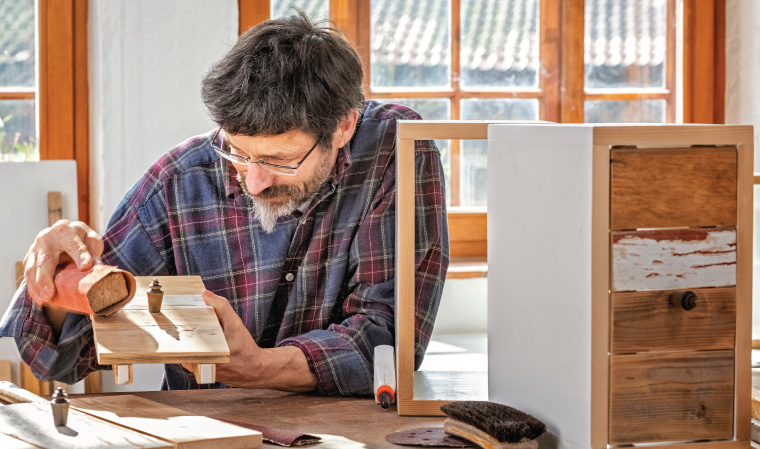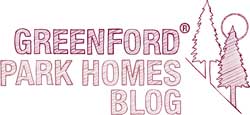Upcycling can be a fun and exciting hobby to get into, even if you’ve never thought about giving it a go before. You don’t need to consider yourself a creative to become hooked. This is about creating items to suit your own personal taste, after all.

When we moved back to the UK from living abroad for a few years, we didn’t have much furniture or home accessories to move in with. It was far cheaper to re-purchase items (mainly from IKEA) than it was to get it all shipped back. Our new home was an empty canvas but there was only so much inspiration that came from flat-packed furniture!
Family members also offered items of old furniture they no longer wanted. It became a bit of a running joke in our house, that my Dad would always try and palm off all his old rubbish onto us. However, furniture is often not made the way it used to be. The ‘throw-away era’ and the competition of mass production have proved too much for some independent furniture retailers to compete with.
My Dad offered us two tall-boy chests of drawers made from beautiful thick pine. I remember them from way back when but I admit I slightly turned my nose up. Although they looked very dated they were of such good quality and so well made. I reluctantly accepted them, not entirely sure what I was going to do with them. We needed to be clever with our storage solutions as space was not completely on our side. The drawers, although very deep, were quite bulky. I just couldn’t see a place for them so, one ended up in our son’s room and the other in the shed. Sacrilege!
Easy upcycling ideas
Over the years we’ve enjoyed upgrading our flat-packed furniture to something more to our liking. Our master bedroom, often a topic of conversation in our home, was not really designed with enough storage space. Once the bed was put in it left hardly any room for anything else. We left it unfurnished, just us and the bed while we continued to look for the right cabinets that would fit perfectly.
Then one day, whilst having a bit of a change around in our son’s room, it became apparent he no longer needed the tall chest but I couldn’t bring myself to throw it in the shed with the other one. So, we decided to upcycle both of them for our bedroom. It became a fun project that both of us enjoyed doing in our spare time together.
We had seen in an article, how painting furniture the same colour as your walls can create the illusion of space, something I was not too keen on in the beginning. But, this is exactly what we decided to do to the beautiful but dated pine wood. We left the top of the chest in its original grandeur, enhancing it with a coat of varnish, whilst painting the rest of the chest in the colour of our walls. We changed the drawer handles to more modern-shaped stainless steel and voila! The transformation was quite impressive and they now sit in pride of place, on either side of our bed. The beauty of it all was that it hardly cost us a penny!
Since then, we have been creative with a few other items of furniture around the house and are currently in the process of transforming our coffee tables.
How to transform your old and unwanted household items
Whether you have been in your Park Home for many years or are looking to downsize and purchase your first Park Home, upcycling can be a way of turning unwanted items into eye-catching one-offs. With retirement on the horizon and extra time on your hands, it may be the perfect time to give upcycling a go.
It doesn’t necessarily need to be just furniture that is upcycled, it can be ornaments, frames and all sorts of items around the house that are perhaps, looking a bit tired and dated. You can apply the same method to the garden with items such as hanging baskets, planters and old pots. During lockdown, I created a herb garden out of an old unwanted pallet. I now grow fresh herbs in it every year.

Upcycling can be a sustainable and cost-effective way of giving new life to unwanted and unused items. If you’re not really sure you want to experiment with the items in your home to begin with, you can often pick up a bargain at a local charity shop or car boot sale. There are also upcycling workshops you can join, where you can learn new skills with like-minded people.
Top tips for upcycling…
Fancy giving it a go just to see how you get on? Follow our beginner’s basic steps to guide you in the right direction….
- Clean the item thoroughly using sugar soap, this will clean the surface you intend to paint without leaving any residue.
- Look for any imperfections, there may be scratches that need filling.
- Sand the item down, taking off any existing sheen. Handy tip – sand in the direction of the grain.
- Use a small amount of white spirit to remove any of the sanding dust.
- Now you are ready to paint or varnish – if you are painting the item, use a primer beforehand this will ensure better adhesion and the paint job will last longer.
- Read the instructions through, because some wood waxes and oils are flammable and you need to take care when disposing of any cloths that you’ve used to apply them.
We’d love to see any pics of your fabulous creations!

